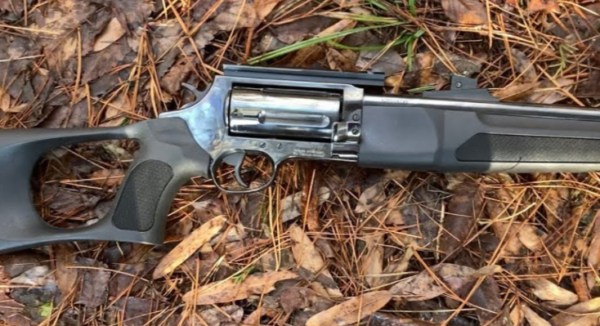Hi dear visitor welcome to our blog.
Remington Sportsman 58 is one of the best brands in the world of guns.
But some people face problems with this model.

In this guide, we explain 13 common problems of this model with unique solutions. So let’s start now.
Remington Sportsman 58 Problems
The Remington Sportsman 58, while generally a reliable firearm, has been reported to have a few issues. One common problem is the difficulty in disassembling and reassembling the gun for cleaning and maintenance.
Some users also find the shell ejector to be problematic, occasionally failing to eject shells properly. Another issue points towards the gas system, which may require regular cleaning to maintain optimal performance.
Despite these issues, many owners continue to appreciate the Sportsman 58 for its overall durability and performance.
1. Failure to Feed


Cause
Failure to feed in the Remington Sportsman 58 is commonly caused by a dirty or damaged magazine tube, a weak magazine spring, or a worn-out magazine follower.
The firearm’s magazine components must be in optimal condition to ensure smooth feeding of shells.
Key Point: Regular maintenance and inspection of the magazine tube, spring, and follower can significantly reduce the chances of a failure to feed.
Solution
To resolve this issue, first, disassemble and thoroughly clean the magazine tube, spring, and follower.
If cleaning doesn’t resolve the issue, inspect the parts for any signs of wear or damage. Replace any worn-out or damaged parts as necessary.
Remember: When replacing parts, use only quality, manufacturer-approved components to ensure the proper functioning of your Remington Sportsman 58.
2. Misfire Issues
Cause
Misfire issues with the Remington Sportsman 58 are often attributed to improperly loaded shells, a defective firing pin, or a corroded or dirty chamber.
A misfire can pose potential risks, so identifying the cause quickly is of utmost importance.
Key Point: A clean, well-maintained firearm is less likely to experience misfire issues.
Regular inspection of the chamber and firing pin can prevent unexpected issues.
Solution
Address misfire issues by first ensuring the shells are loaded correctly. If this does not resolve the issue, inspect the firing pin and the chamber.
Any sign of damage or excessive dirt in these areas should be addressed immediately.
Cleaning might be sufficient, but if corrosion or damage is detected, the affected parts should be replaced.
Remember: Safety should always be the priority. If you’re unsure about any steps, consulting a firearms expert or a gunsmith is highly recommended.
3. Ejector Malfunctions
Cause
Ejector malfunctions in the Remington Sportsman 58 are typically the result of a weakened or broken ejector spring or a dirty or damaged ejector.
Over time, repetitive usage and inadequate maintenance can lead to these parts wearing out, resulting in failed or inconsistent ejection of shells.
Key Point: Regular inspection and prompt replacement of worn-out or damaged ejector components can significantly reduce the likelihood of ejector malfunctions.
Solution
To address ejector malfunction issues, begin by disassembling and thoroughly cleaning the ejector and ejector spring.
If cleaning doesn’t rectify the issue, closely inspect these components for any signs of wear, breakage, or damage.
Any faulty parts should be replaced immediately with manufacturer-approved components to ensure optimal performance.
Remember: When dealing with firearm repairs, always prioritize safety. If you are unsure of the process, consider seeking help from a skilled gunsmith or a firearms expert.
4. Trigger Assembly Problems
Cause
Trigger assembly problems in the Remington Sportsman 58 typically stem from a defective trigger component, accumulation of dirt, or improper assembly of the trigger group.
These issues can impede the firearm’s performance, leading to inconsistent firing or potential safety concerns.
Key Point: Regular cleaning and inspection of the trigger assembly can help prevent most trigger-related problems.
Any issues should be addressed promptly to prevent impairment of the firearm’s functionality.
Solution
To rectify trigger assembly problems, start by disassembling the trigger group and thoroughly clean all its components.
If cleaning doesn’t alleviate the issue, inspect each component for signs of wear, damage, or incorrect assembly.
Replace any faulty components with manufacturer-approved parts, if necessary. Assemble the trigger group carefully, ensuring each part is correctly positioned.
Remember: Always prioritize safety when handling firearms.
If you’re not confident in carrying out these procedures, seek professional assistance from a gunsmith or firearms expert.
Regular maintenance and vigilance can significantly reduce trigger assembly problems.
5. Gas System Failures
Cause
Gas system failures in the Remington Sportsman 58 are most commonly attributed to a clogged gas port, a damaged gas seal, or a worn-out piston or piston seal.
These components are integral to the proper functioning of the firearm, and any issues can hamper the cycling process, leading to stovepiping, short stroking, or complete failure to cycle.
Key Point: Regularly cleaning the gas system and promptly addressing any signs of wear or damage can significantly reduce the chances of gas system failures.
Solution
Resolving gas system failures involves a thorough cleaning of the gas port, piston, and piston seal. This can often clear up any issues caused by accumulated debris or corrosion.
If cleaning doesn’t resolve the issue, inspect these components to detect any signs of wear or damage.
If any part is found to be faulty, ensure to replace it with manufacturer-approved components.
Remember: Always consider safety first while handling firearms.
If you’re uncertain about any aspect of this procedure, seeking help from a professional gunsmith or firearms expert is highly recommended.
A well-maintained gas system ensures a reliable firearm performance.
6. Bolt Carrier Sticking
Cause
Bolt carrier sticking in the Remington Sportsman 58 usually results from a buildup of dirt or residue, a deformed bolt carrier, or inadequate lubrication.
These issues directly interfere with the firearm’s seamless operation, causing sluggish bolt carrier movement or even completely preventing action cycling.
Key Point: Regular cleaning, proper lubrication, and meticulous inspection can greatly minimize the risk of bolt carrier sticking.
Solution
Addressing bolt carrier sticking involves thorough cleaning of the bolt carrier group, ensuring all surfaces and crevices are free from grime and residue.
If cleaning doesn’t resolve the issue, inspect the bolt carrier for any signs of deformation or damage. Any such issues should be addressed by replacing the affected part with a manufacturer-approved component.
Lastly, ensure that the bolt carrier is properly lubricated with a high-quality firearm lubricant to facilitate smooth operations.
Remember: Safety is paramount. If you’re unsure or uncomfortable performing these steps, consult a professional gunsmith.
Regular maintenance and cleaning can significantly prevent bolt carriers from sticking.
7. Extractor Issues
Cause
Extractor issues in the Remington Sportsman 58 generally arise due to a worn or broken extractor or due to the accumulation of dirt and residue in the extractor groove.
These problems can lead to inconsistent or failed extraction of spent shells, interrupting the firearm’s cycling process and potentially posing a safety risk.
Key Point: Regular maintenance and prompt replacement of a faulty extractor can effectively mitigate extractor issues in your firearm.
Solution
The primary course of action to address extractor issues is to clean the extractor and its groove thoroughly to remove any accumulated debris.
If cleaning doesn’t solve the issue, inspect the extractor for any signs of wear or breakage. Replace the extractor with a manufacturer-approved part if any damage is noted.
Always ensure that the extractor fits snugly in its groove and that it can move freely for optimal functionality.
Remember: When handling firearms, safety should be your paramount concern. If you’re unsure about any steps, it’s advisable to consult a professional gunsmith.
Regular inspection and proper cleaning can significantly improve extractor performance.
8. Barrel Problems
Cause
Barrel problems in the Remington Sportsman 58 predominantly originate from either a buildup of residue inside the barrel, leading to decreased accuracy, or physical damage to the barrel itself, potentially affecting the firearm’s overall performance and safety.
Key Point: Regular cleaning of the barrel and careful handling can significantly prevent barrel-related issues.
Damages to the barrel should never be overlooked due to the safety risks they pose.
Solution
To tackle barrel problems, start by thoroughly cleaning the inside of the barrel with a suitable cleaning rod and patch, removing any accumulated residue.
If you detect any physical damage such as dents or cracks in your barrel, it’s crucial to replace it with a manufacturer-approved barrel.
Never attempt to use a firearm with a damaged barrel as it significantly compromises safety.
Remember: Always prioritize safety in every aspect of firearm maintenance.
If you’re unsure about any maintenance steps, it’s advisable to consult a professional gunsmith. Regular cleaning and inspection can effectively prevent barrel problems.
9. Magazine Tube Complications
Cause
Magazine tube complications in the Remington Sportsman 58 are primarily attributed to debris accumulation, a dented or damaged tube, or a worn-out magazine spring.
These factors can lead to irregular feeding of cartridges, causing operational inconsistencies and potential failures in the firearm’s cycling process.
Key Point: Regular inspection and cleaning of the magazine tube, along with timely replacements of any worn-out components, can greatly reduce the likelihood of magazine tube complications.
Solution
Resolving magazine tube complications involves meticulous cleaning of the tube and spring to remove any debris or accumulated grime.
If cleaning doesn’t rectify the issue, inspect the tube for any physical damage such as dents or cracks.
In the case of visible damage or a noticeably weakened magazine spring, replace the affected component with a manufacturer-approved part.
Remember: Safety should always come first. If you’re unsure about carrying out these steps, seek assistance from a professional gunsmith.
Proper maintenance can significantly enhance the reliability of the magazine tube.
10. Stock Cracking
Cause
Stock cracking in the Remington Sportsman 58 primarily occurs due to rough handling, exposure to extreme weather conditions, or material aging.
These factors can result in visible cracks or splits in the firearm’s stock, impairing its structural integrity and potentially compromising the overall performance and safety.
Key Point: Treat your firearm with care. Regular inspection of the stock and preventive measures against harsh conditions can significantly mitigate the risk of stock cracking.
Solution
Addressing stock cracking involves a careful examination of the firearm’s stock for signs of damage.
Minor cracks may be repairable with a specialist adhesive or a professional gunsmith’s intervention.
However, extensive damage typically necessitates a full replacement with a manufacturer-approved stock.
It’s crucial to avoid using a firearm with a cracked stock due to the potential safety hazards it poses.
Remember: Prioritize safety above all. If in doubt, consult a professional gunsmith. Timely interventions can prevent minor issues from escalating into major problems.
11. Not Cycling
Cause
Not cycling in the Remington Sportsman 58 is often linked to issues such as worn recoil springs, insufficient lubrication, or the use of inappropriate ammunition.
These factors can disrupt the firearm’s ability to automatically eject a spent case and load a new round into the chamber after each shot, resulting in the firearm not cycling correctly.
Key Point: Recognize that a well-maintained recoil spring, proper lubrication, and using the correct ammunition are integral to your firearm’s cycling process.
Inadequate attention to these aspects can lead to the firearm not cycling properly.
Solution
The solution for not cycling primarily involves checking the recoil spring for any signs of wear, and replacing it with a manufacturer-approved part if necessary.
Next, ensure the firearm is sufficiently lubricated to facilitate smooth operations. Lastly, verify the ammunition being used is suitable for your specific model.
Remember: Safety is paramount. If unsure about these procedures or the type of ammunition to use, always consult a professional gunsmith.
A proactive approach to maintenance can substantially eliminate issues with your firearm not cycling.
Conclusion
Owning and operating a firearm such as the Remington Sportsman 58 is a responsibility that requires a thorough understanding of the gun’s operating mechanisms, as well as a commitment to regular maintenance and safety precautions.
Each potential issue, be it barrel problems, magazine tube complications, stock cracking, or the firearm not cycling correctly, can be considerably mitigated or even prevented through regular cleaning, inspections, and part replacements as needed.
Moreover, if any uncertainty arises during these processes, do not hesitate to reach out to a professional gunsmith for assistance.
Remember, when it comes to firearms, safety, and responsible ownership should always be our foremost concern.
FAQs
When was the Remington Sportsman 58 made?
The Remington Sportsman 58 was produced from 1956 to 1963.
When was the Remington Sportsman made?
The original Remington Sportsman series was first manufactured in 1931.
How much does a Remington 58 weigh?
Typically, the weight of a Remington 58 is approximately 7.5 pounds.
Remington 760 Gamemaster Problems
Springfield Saint Victor Problems


As the founder and owner of the domain “mygunsgeek.com”, I bring to the table a deep passion for firearms, combined with a strong commitment to sharing this knowledge with a wider audience. With years of experience exploring the inner workings of various firearms, from pistols to rifles, I have cultivated a vast expertise in this field. This has enabled me to create a platform that serves as a trusted resource for gun enthusiasts, providing comprehensive reviews, advice, and insights into the latest trends and advancements. I am dedicated to ensuring that my content is both informative and engaging, helping my readers make informed decisions about their firearm choices. For any inquiries or suggestions, feel free to reach out to me at wwwfffwww117@gmail.com. Your feedback is invaluable in shaping the content and direction of mygunsgeek.com.


